My dog doesn’t want to go outside, but he really needs to potty – what do I do?!
This is a question every dog professional hears extremely often. While we undoubtedly love our pups, certain situations require all our patience. Such is the case when our dogs don’t want to go outside, even though we know they really need to go.
While we might think our pooch is making a bad joke, the truth is often more complicated. There is usually a very good reason why our furry companions refuse to step a foot outdoors – and it’s not just so they could annoy us.
So, the next time you say to yourself, My dog doesn’t want to go outside to do his business yet again, here are 9 possible causes behind this behavior – as well as proper methods to fix it:
1. It’s Boring
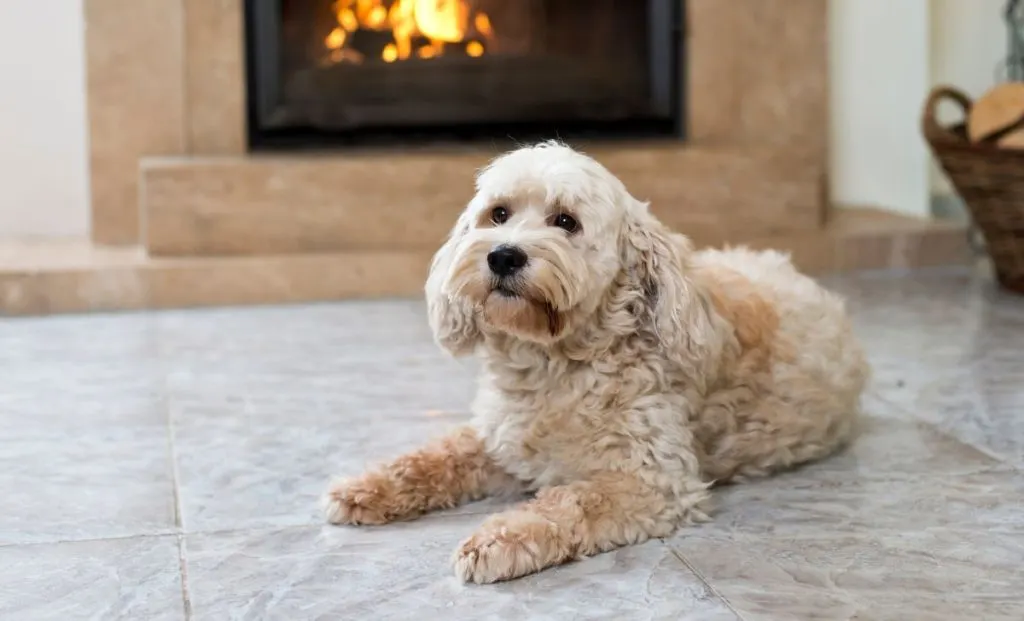
Let’s face it – bathroom breaks are not the funniest thing in the life of a dog. He’d much rather spend some time playing fetch or even chasing his own tail!
Not all dogs find going outside to be enjoyable, especially if you don’t really do much during potty breaks. On such occasions, they’ll connect outdoors with that boring part of the day they really don’t feel like doing. Puppy pads seem like a much more convenient option!
2. Bad Weather
Maybe your dog feels like this isn’t the right time to go outdoors.
If it’s too hot or cold outside, your dog will feel unpleasant and might refuse to go out. They feel much better waiting for conditions to improve than going out just because you’ve said so.
And he might be right! Taking him out when the weather isn’t appropriate can result in many issues, such as heatstroke.
3. They Want More Attention
Dogs thrive on attention and find it rewarding. If you make too much fuss about your pup not wanting to go outside, he’ll think of it as a good thing.
So, if every time you exclaim My dog doesn’t want to go outside again, you also start yelling or pushing him or even just pleading with him, you are essentially supporting this behavior, even though you might not be aware of this.
People make the same mistake when they want to correct bad behaviors in general. For example, one of the ways to stop a puppy from crying is to ignore him instead of reacting every time you hear him.
4. Separation Anxiety
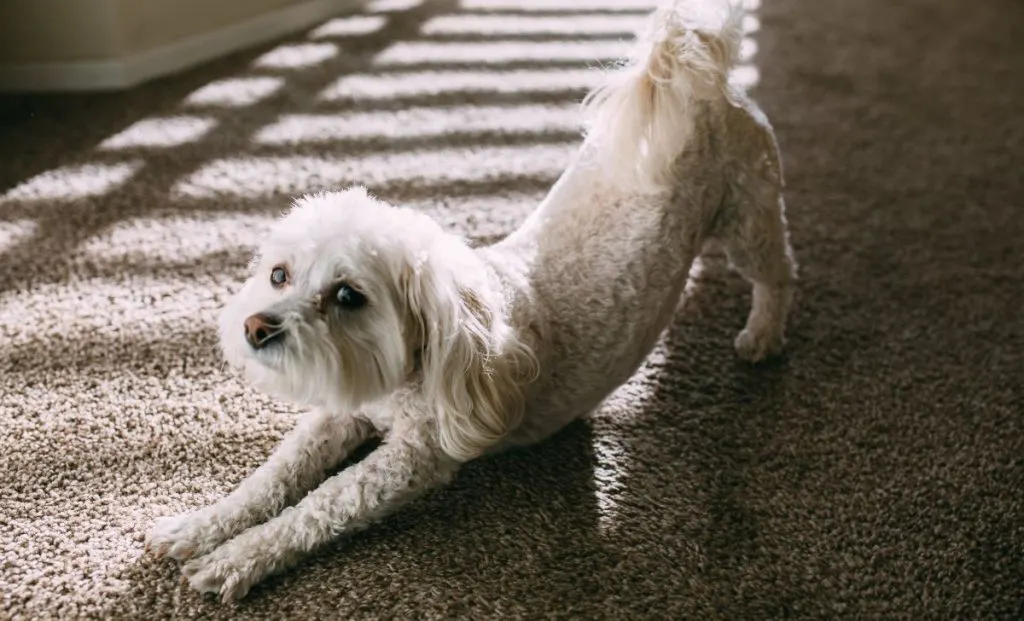
Sometimes, pet parents go outside, and they’re gone for a long time. Similarly, sometimes dogs are taken for a walk and their favorite human is left behind.
Dogs suffering from separation anxiety might have trouble leaving the house, even if their owner is by their side.
While this might sound illogical considering you’ll be going out as well, put yourself in your dog’s shoes – or, well, paws.
Going for a walk means discomfort and alone time, and this is never a good thing.
5. Inside Smells Better
Smells are an important part of a dog’s life. Unfamiliar smells can be a bad thing, and the outdoors is full of them!
Many dogs will love going outside and smelling new things. However, some dogs prefer common scents, and those are found inside the house.
Not only that, but if your pup has had an accident indoors, he might still sense the smell, even though you think you’ve cleaned it. This will make him associate potty smells with your house, so going outside to potty will be nothing short of irrational for your sensitive doggie!
6. Noise Sensitivity
Some pups are sensitive to loud noises, such as barking dogs, mowers, or traffic.
Remember, dogs can hear much better than we do. All that commotion outside can be too much for some pups to handle, and they’ll prefer to stay inside.
This is especially the case during the holiday season when many people use fireworks to celebrate. Firecrackers and other pyrotechnics are too loud for us humans – imagine how loud they are to your furry friend!
7. Fear
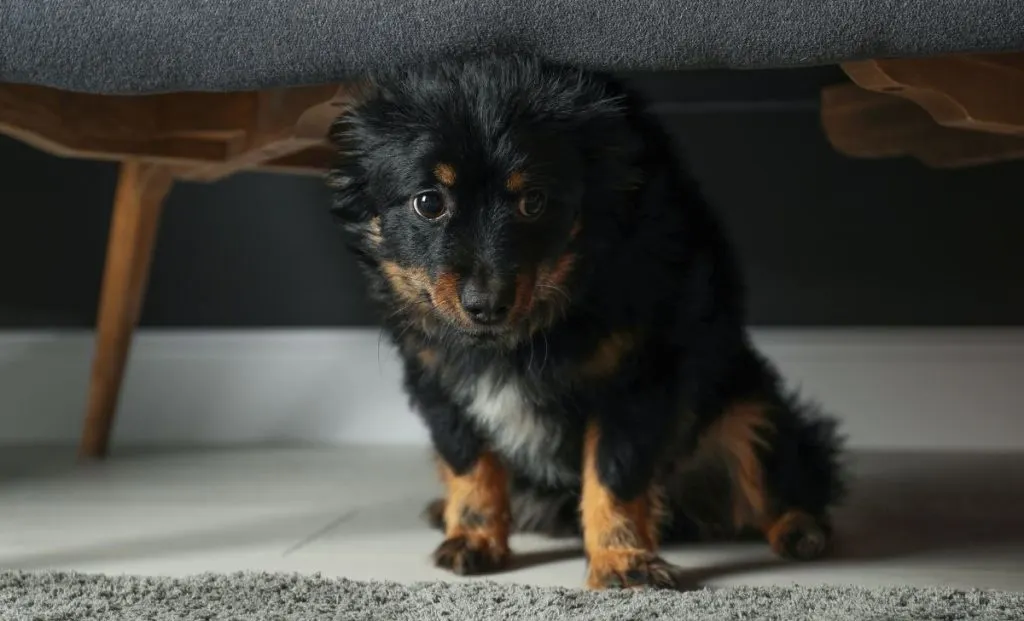
A young pup that is not yet used to many new things can find the outside world scary.
The same goes for skittish dogs that are anxious about many things, from flies inside your home to your neighbor’s cat!
If your dog keeps whining and tucking his tail between his legs when you start walking towards the door, he is most likely afraid to go out.
8. Trauma
Adopted dogs have often had bad experiences with previous owners. This can result in improper behaviors and traumas, some of which can be connected with going outside.
Another case is if you’ve taken your dog for a walk and something bad has happened. Maybe he was attacked by another dog, ate a bee, or heard some loud noise.
This can make your pup associate outdoors with bad things, and he’ll be absolutely terrified at the mere thought of going out.
9. Medical Issues
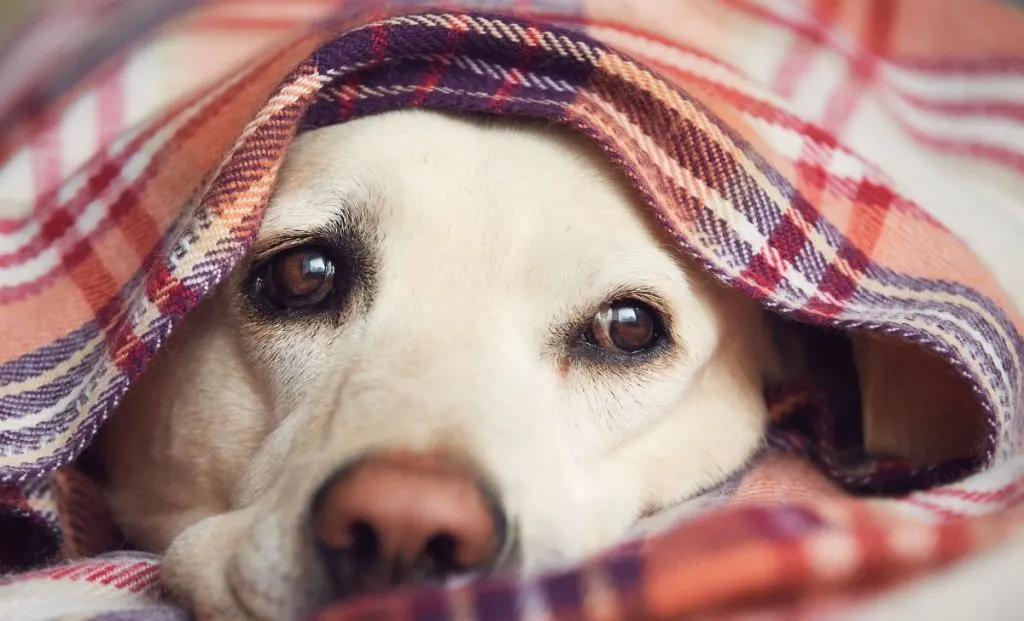
If you’ve noticed a sudden change in your dog’s behavior, which also includes his refusal to go out, maybe he is struggling with some medical condition.
This is especially the case with older dogs who are prone to joint pain and discomfort.
Conditions such as hip dysplasia and luxating patella can cause severe pain. This can even result in aggression, especially if you try to force your pooch to do something he doesn’t feel like doing.
How To Make Your Dog Go Outside
No matter how tired you are of puppy pads, there is no one easy way to make your dog suddenly want to go outside.
Here are some tips that can help you get through this hard time and make walks easier for both you and your furry companion:
1. Create Consistent Schedule
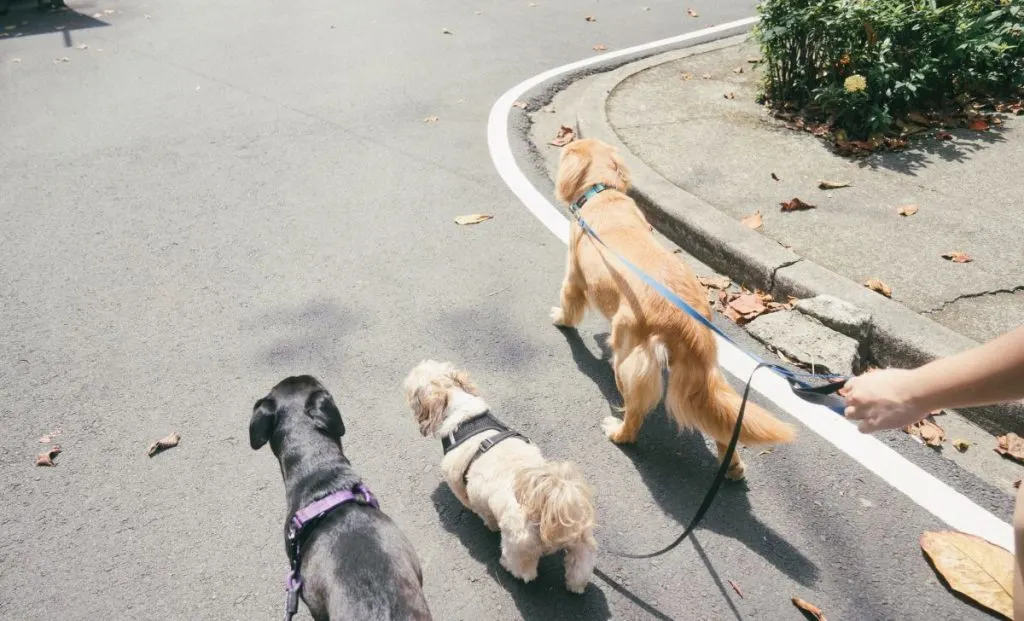
Don’t underestimate the importance of a poop schedule!
Take your dog outside at the same time of day, such as first thing in the morning or right after a meal.
If your dog expects to go outside, he’ll be more keen on accepting his fate. Not to mention that this is when he’ll really be more likely to go potty!
2. Identify Triggers And Desensitize
Dogs can be scared of different things outside, from other canines to cars or even seemingly being things such as stairs or grass!
Try to find what’s scaring your pup and slowly make him desensitized by exposing him to triggers.
Don’t force your pooch to do something he doesn’t want to! Simply show him that the things he is afraid of aren’t that terrifying.
Some of the good techniques are positive reinforcement, noise aversion, and associating scary items with good things, such as pets or cuddles.
3. Leash Training
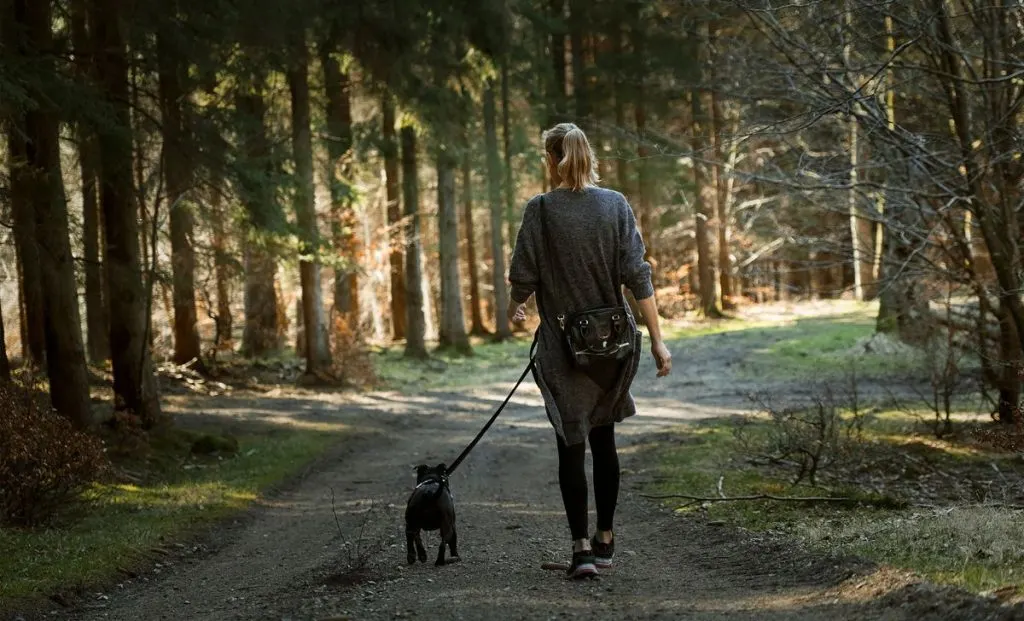
Some dogs aren’t afraid of going outdoors but rather hate the leash. This is why it’s important to leash-train your pup at a young age.
If you need additional help, don’t hesitate to contact a professional dog trainer. Leash training can be tricky, and it can take some time. However, it will make bathroom breaks a dozen times more enjoyable for both you and your dog.
4. Positive Reinforcement
Whenever you need to go on a walk, offer your dog a treat or a good cuddle session. This will help him connect walks with good things.
Just don’t go overboard! Treats shouldn’t make more than 10% of a dog’s diet. Otherwise, you’ll be risking obesity and health issues.
5. Spend Time With Him
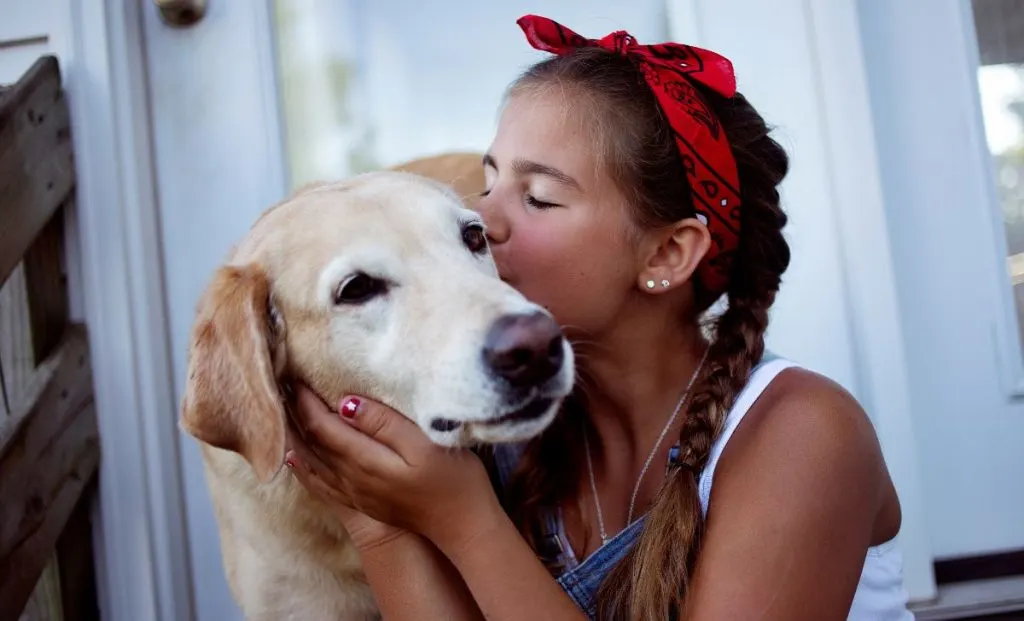
Help your dog associate potty breaks with spending time with you. Don’t just go outside for a minute and then go indoors the moment he completes his business.
Play a quick game of fetch, or just let him chase some local squirrels and have some fun.
6. Crate Training
Did you know that crate training is essential when it comes to teaching your dog to go outside? By keeping him in a crate, he’ll learn to hold it until you let him outside. This will reinforce the right behavior and help prevent accidents.
Of course, you should only do this if your pup is crate-trained. If he’s afraid of staying in a crate, you’ll only do more harm than good.
7. Deal With Indoor Odors
As mentioned, sometimes dogs don’t want to go outside because they think your couch is a better place for business. This is typically because they’ve once had an accident, and now your house smells like a toilet only dogs can scent.
Cleaning your house with regular products is typically not enough. You need products such as an enzyme cleaner that will get rid of all the traces of dog poop and pee smell.
You might even find some smell your dog hates and spray it indoors before going outside, so your dog will want to go outside and get some fresh air. Of course, make sure these smells are not harming your dog in any way.
8. Choose Appropriate Weather
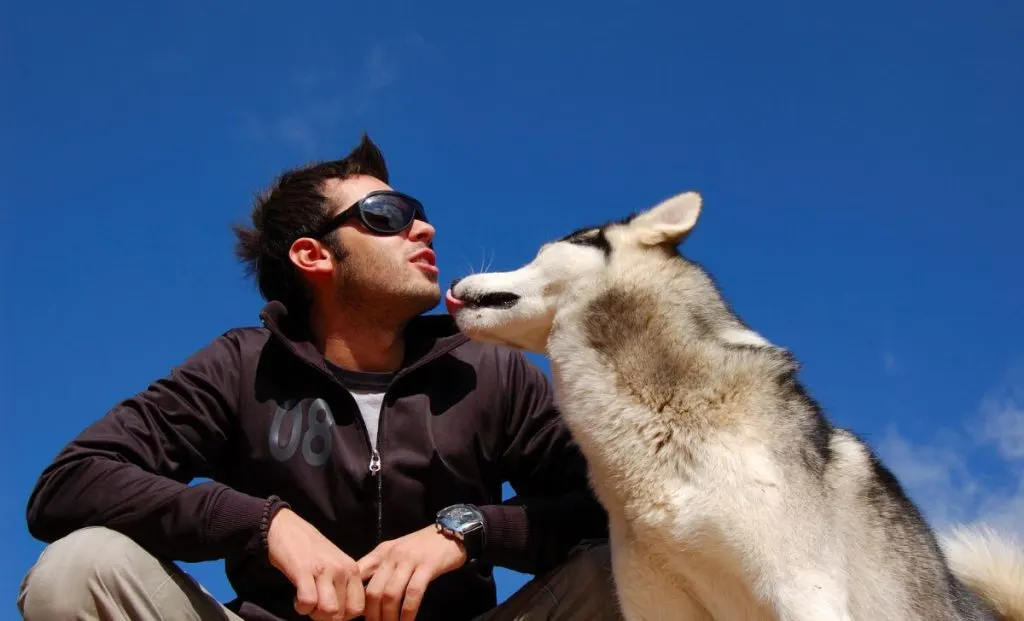
Proper conditions are an important consideration when taking your dog for a walk. Too hot or cold weather can be unpleasant for your pup, making them not want to leave the house.
Make sure your dog has a proper doggie vest or even doggie shoes for outdoor conditions. Remember, if you’re feeling hot or cold, your dog is probably feeling even worse, as he doesn’t have clothes to protect him.
Avoid walking him during the hottest summer hours, and try to keep him on the grass as the pavement can hurt his poor paws. If it’s snowing, the walks should be as short as possible.
Do all you can to make your dog feel pleasant while walking.
9. Take Him To The Veterinarian
My dog doesn’t want to go outside, I’ve tried everything!
If all else fails, the best option is to take your pup to a local vet for some extra help.
Maybe your four-legged best friend is dealing with some serious problem only a vet can solve. Don’t leave anything to chance.
Good luck in making walks more pleasant for everyone!

Vanja’s passion for writing started at an early age, which is why she pursued Journalism as her college degree. She can research any topic and find all the information before you bat an eye, which is a great thing for her job but a terrible one for her husband.
Even as a young child, she fell in love with everything fluffy – but dogs have a special place in her heart due to her childhood companion, a Corgie named Archie.
Motivated by her experiences and driven by a desire to give back to her four-legged companions, she spends her free time volunteering at a local dog shelter.
